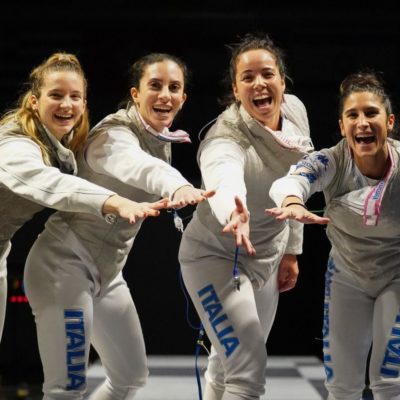 The Olympics are in Beijing in 2008, how are the teams chosen for the fencing competition?
The Olympics are in Beijing in 2008, how are the teams chosen for the fencing competition?
Over the last 100 years, the number of sports represented in the Olympic games has mushroomed and the IOC took action to attempt to keep the total number of athletes participating in the games to a reasonable level so that the host nations will have a chance at running a decent games.
The mandated levels of athlete participation has led to changes in the selection process for the Games. Each nation is no longer guaranteed an athlete in each sport – now nations and athletes have to compete against not only their countrymen, but against others in their region or continent for an Olympic slot.
The addition of Women’s Sabre as an event in fencing led to even more changes for 2004. In the 2004 Olympic Games all of the men’s events (epee, foil, and saber) were included, but two of the three women’s events did not hold the team competition.
The FIE is now rotating which events will sit out the team portion of the Olympics (since the IOC won’t grant additional medals for fencing), and for the 2008 Olympic Fencing competition, Men’s Foil and Women’s Epee will only hold an individual tournament.
Who gets to go?
Athletes are competing for slots based on their nation’s standing in the world (for team events) and based on individual world rankings (for the individual event.) Total participation is limited to 212 athletes over 10 events (4 team and 6 individual). Here’s a breakdown of what it will take for an aspiring swordsman (or swordswoman) to get a ticket to Beijing:
Weapons with Team Events (Men’s Epee, Men’s Sabre, Women’s Foil, Women’s Sabre):
 Team Events are comprised of teams of 3 fencers with 1 alternate. A total of 8 teams can compete in each team event (9 if China fails to qualify a team directly). The top 4 teams in the world standings will qualify directly to the Olympics. The remaining 4 teams are chosen based on regional qualification. The top team from each region (Americas, Asia, Europe, Africa) that is not already qualified will earn a regional berth.
Team Events are comprised of teams of 3 fencers with 1 alternate. A total of 8 teams can compete in each team event (9 if China fails to qualify a team directly). The top 4 teams in the world standings will qualify directly to the Olympics. The remaining 4 teams are chosen based on regional qualification. The top team from each region (Americas, Asia, Europe, Africa) that is not already qualified will earn a regional berth.
The individual event is a tournament with a field of 39 fencers. For the individual competition, the 24 fencers that competed in the team event qualify. After the first 24 fencers are chosen, the top 3 in the World standings qualify, with only one fencer from any one country. The next 7 are pulled from the Olympic zones as the top 2 from Europe, 2 from Asia, 2 from the Americas, and 1 from Africa, again with only 1 fencer from a country. The remaining 5 slots are determined by a continental qualifying competition with 2 from Europe and 1 from each of the remaining regions.
What about Men’s Foil and Women’s Epee?
A different set of criteria is used to pick the 24 fencers who will compete in the Men’s Foil and Women’s Epee events. Because there is no team event, each individual will have to qualify on their own merit and not on the ranking of their national team. The following formula is used to pick the 24 individual entries:
The top 8 in the World rankings get their tickets punched (but only 2 can go from the same country from this set.) After the first 8 are chosen, the next 8 in are picked by region based on adjusted world rankings. (There are 3 slots for Europe, 2 for Asia, 2 for the Americas, and 1 for Africa.) The last 8 qualify based on continental competitions where countries that haven’t qualified any fencers on the first 2 rounds. In the last round, the allocation of slots remains at 3 Europe, 2 Asia and Americas, and 1 for Africa.
 Outlook for the United States
Outlook for the United States
Will the US earn a medal in 2008?
The United States earned Bronze and Gold medals in Women’s sabre in 2004. Sada Jacobson and Mariel Zagunis are still at the top of the world rankings and are joined by young fencing phenom Becca Ward, who last year won the individual world championship title at the Cadet, Junior, and Senior levels of competition. The US is favored to medal in Women’s Sabre.
In the other weapons, the best hopes are with Men’s Sabre as the individual team members are posting good results for the season.
Our next article will begin to preview the field starting with the current world rankings and trends for the team events.





